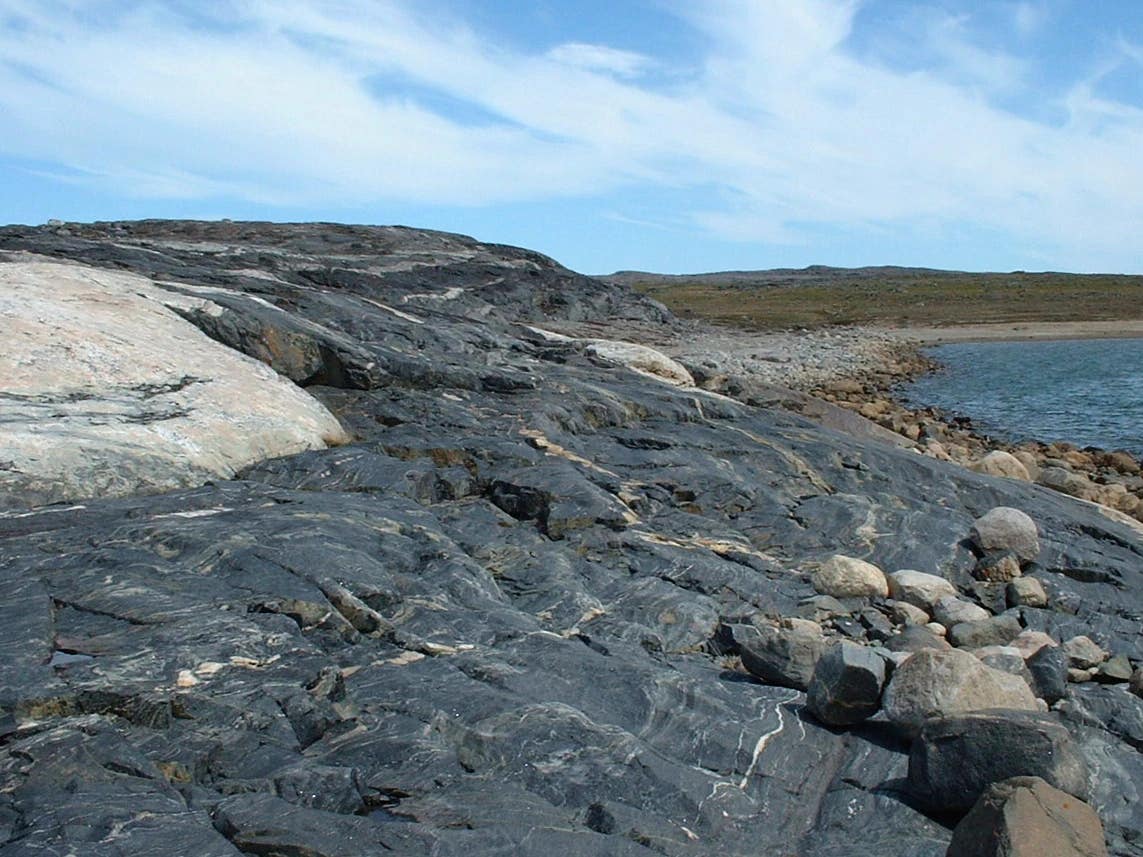New study confirms 4.16 billion-year-old rocks in Canada as Earth’s oldest
A new study confirms volcanic rocks in northern Quebec are 4.16 billion years old, revealing rare clues about Earth’s earliest crust.

The rugged terrain of northeastern Canada’s Nuvvuagittuq Greenstone Belt, captured in this photo, offers a glimpse into the Earth’s oldest rocks. (CREDIT: Jonathan O’Neil)
The ancient history of Earth has always been hard to read. Most of the planet’s earliest crust has been lost, buried, or melted by geologic processes over billions of years. The rare remnants that survive offer short and scattered glimpses into Earth’s formation. Now, a set of ancient rocks from a remote site in Canada may bring scientists closer than ever to understanding what the planet looked like during its fiery beginnings.
A breakthrough deep in Canada's north
Along the eastern shore of Hudson Bay, near the village of Inukjuak in Nunavik, lie weathered bands of gray stone that have sparked intense debate for decades. These formations belong to the Nuvvuagittuq Greenstone Belt, a stretch of metamorphosed volcanic rock long suspected to be among the oldest surviving pieces of Earth’s crust.
For more than 15 years, geologists argued about the rocks’ true age. Some claimed they were at least 3.75 billion years old. Others suggested they could date back as far as 4.3 billion years, placing them in the Hadean eon—the first 500 million years of Earth’s history. Still, many remained skeptical. Different methods produced conflicting results, and some scientists believed that younger rocks had contaminated the samples.
That all changed with a new study led by Jonathan O’Neil at the University of Ottawa. The team used advanced isotope dating techniques to analyze a different part of the formation—specifically, mafic intrusions that had not been tested in previous studies. The researchers used two independent radiometric systems, both of which measure how radioactive elements decay over time.
Their results matched. The rocks were confirmed to be 4.16 billion years old, with a margin of error of about 174 million years.
“The different methods gave exactly the same age,” said O’Neil. The consistency between the long-lived ¹⁴⁷Sm-¹⁴³Nd system and the short-lived ¹⁴⁶Sm-¹⁴²Nd system strengthened the case for these being true Hadean rocks. The study appeared in the journal Science.
Unlocking the secrets of the Hadean Earth
The Hadean eon marked the most chaotic and least understood chapter of Earth’s past. During this time, the planet was still cooling after forming from a swirling cloud of dust and gas. Volcanoes erupted constantly. Oceans of molten rock stretched across the surface. Earth’s crust was unstable, and massive collisions—including one that likely formed the Moon—were common.
Related Stories
Despite this violent beginning, the planet slowly started to settle. The crust thickened. Steam from volcanic activity condensed into water. By the end of the Hadean, Earth had begun to form oceans—and possibly even early conditions that could support life.
Until now, most of what scientists knew about this era came from ancient zircon crystals. These minerals, often found in younger rocks, had survived from earlier times but didn’t reveal much about the larger geological systems that shaped the early Earth.
The new study changes that. The Nuvvuagittuq rocks aren’t just ancient fragments—they are larger structures that seem to have formed through the solidification of magma during the Hadean period. Their formation predates the trondhjemitic bands in the belt, which themselves have been dated to about 3.77 billion years ago. The intrusive rocks studied by O’Neil’s team formed even earlier.
“This confirmation positions the Nuvvuagittuq Belt as the only place on Earth where we find rocks formed during the Hadean eon,” said O’Neil.
Clues locked in stone
To pinpoint the rocks’ age, the researchers looked at how samarium (Sm) slowly transforms into neodymium (Nd) over time. Both elements are rare earth metals, and their decay process is predictable.
When a rock first forms, it contains a known amount of radioactive samarium. Over billions of years, that samarium breaks down into neodymium. By measuring the ratio between the two, researchers can calculate how much time has passed since the rock solidified.
This method, known as Sm-Nd dating, works particularly well on rocks that don’t contain zircon, which is common in felsic rocks but absent in the mafic and ultramafic rocks believed to dominate Earth’s early crust.
In this study, both the long-lived ¹⁴⁷Sm-¹⁴³Nd system and the extinct ¹⁴⁶Sm-¹⁴²Nd system pointed to the same conclusion. That agreement was key. “The age agreement between both extant and extinct radiogenic systems… is compelling evidence for preservation of Hadean rocks,” the researchers noted.
The intrusive rocks cut through older volcanic layers, meaning the rocks they pierced must be even older. This detail adds more weight to the argument that parts of the Nuvvuagittuq Greenstone Belt formed within the first 400 million years of Earth’s existence.
A rare glimpse into early continents
The discovery gives scientists a rare chance to study how Earth’s first crust might have formed directly from the mantle. That’s different from younger crust, which usually forms from the melting of earlier rocks. Most ancient felsic rocks are believed to have originated that way, making it hard to trace them back to original mantle processes.
Because the Nuvvuagittuq samples likely came straight from Earth’s mantle, they offer more direct insight into what the planet’s interior looked like during the Hadean. They also may help researchers understand the conditions under which early oceans and life-supporting environments first appeared.
“Understanding these rocks is going back to the very origins of our planet,” said O’Neil. “This allows us to better understand how the first continents were formed and to reconstruct the environment from which life could have emerged.”
Mark Reagan, a volcanologist at the University of Iowa who was not involved in the study, agreed. “To have a sample of what was going on on Earth way back then is really valuable,” he said.
Preserving a cultural and scientific treasure
The rock formation lies on tribal Inukjuak lands managed by the Pituvik Landholding Corporation. Local Inuit leaders are working with scientists to protect the site after past research visits left visible damage. Some rocks were even found for sale online.
“There’s a lot of interest for these rocks, which we understand,” said Tommy Palliser, a member of the community. “We just don’t want any more damage.”
The community is advocating for the creation of a provincial park that would protect the site while still allowing scientists to study it. This partnership may ensure that both the land and its secrets are preserved for future generations.
A window into Earth’s first chapter
These ancient stones, resting quietly along Hudson Bay, carry with them the story of Earth’s chaotic beginnings. They formed at a time when our planet was just a newborn—hot, unstable, and just beginning to take shape.
They are more than just old rocks. They are a record of what came before continents, before oceans, before life. And they remind us that even the most distant past can still speak, if you know how to listen.
Note: The article above provided above by The Brighter Side of News.
Like these kind of feel good stories? Get The Brighter Side of News' newsletter.



